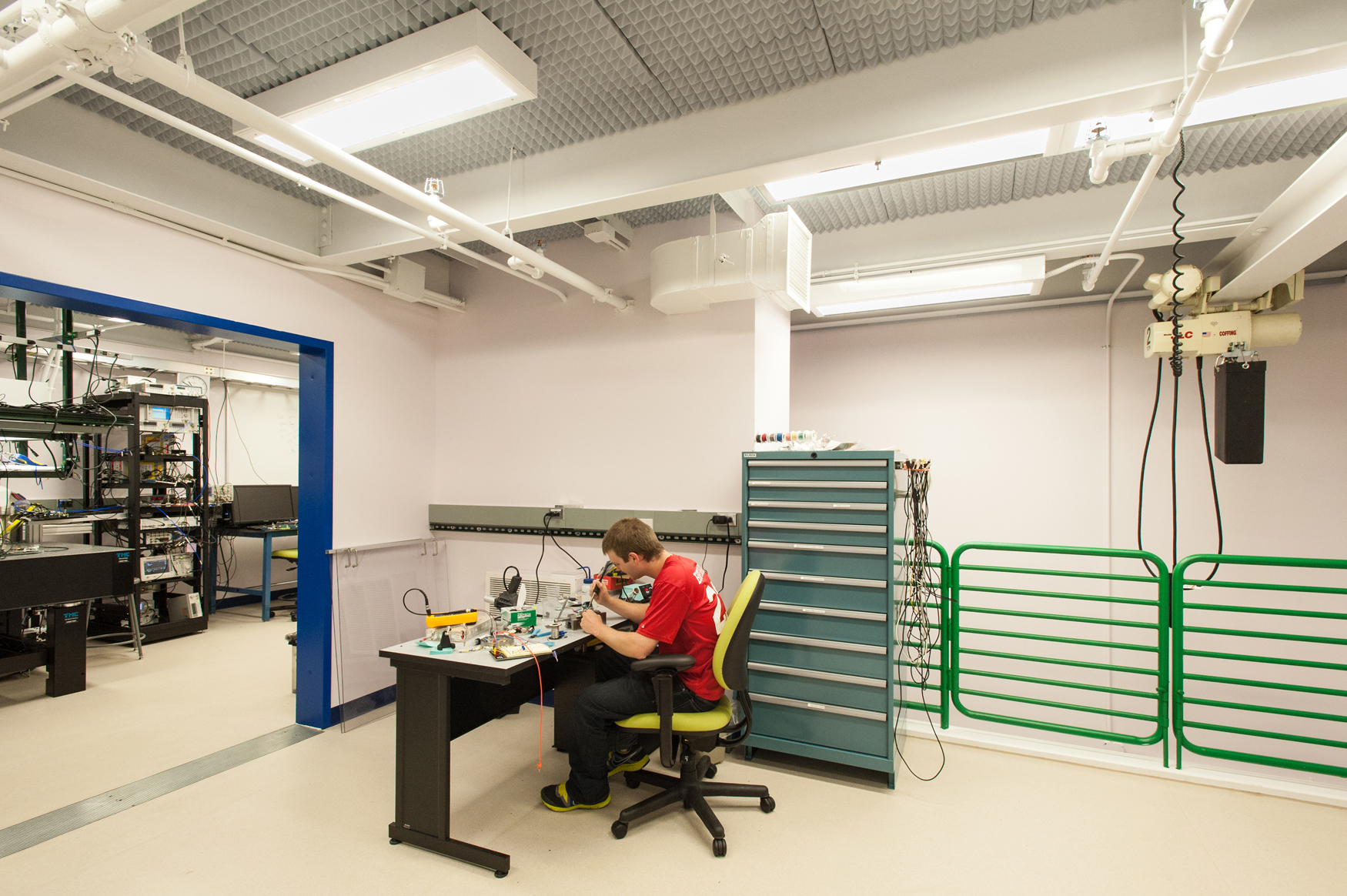Christopher Williams Architects LLC (CWA) recently completed a 2,150 sq ft multi-level laboratory with ancillary spaces for Department of Physics Principal Investigator Jack Harris and his research team. The new space provides an environment to study the quantum aspects of motion through cryogenic and room-temperature opto-mechanical experiments – The experiments focus on the force that light exerts upon small mirrors at temperatures approaching Absolute 0°. In doing them, they hope to refine theories of low-temperature physics that will result in more accurate fiber optics and laser technology, including the possibility of quantum computing,
To make this level of research possible — which means, among other things, measuring only the vibrations generated by an exceedingly weak light force exerted on small mirrors — CWA created an environment that provides extraordinary acoustical separation, vibration isolation, and thermal stability to support the sophisticated, expensive and unwieldy equipment.
Located in Yale’s Wright Nuclear Structure Laboratory (a 27,000 sq ft building constructed in 1960), the space allocated for the new lab was the last un-improved piece of the west high-bay that formerly housed the reactor. Far from ideal, the space presented a number of challenging physical constraints, including a two-story concrete shell that was too expensive to demolish. Also, the designated area sits at the juncture of three separate building additions – this meant that each perimeter wall presented a different physical configuration on each face and different exposures on each level. As Chris Williams explains, “The trick was to integrate the shell into the overall design while decoupling each perimeter wall individually. A hierarchy of acoustical separation techniques effectively isolates the entire lab from the rest of the building, the internal labs from each other and the two-story refrigerator chamber which contain the functional specimens, from the labs.”
Integrating unique equipment into a complex space required a level of mutual understanding that drawings alone could not communicate. CWA built a replica in which the research team could determine comfortable working postures, identify reach limits, and test positional preferences needed to perform tasks, some of which require the precision and control of an eye surgeon. The mock-up later saw a second life as the practice stand-in for the delivery and installation of the new equipment, which the lab researchers handled themselves.
Using the models, the team worked out the details of the rigging methods, clearances, sequences, and responsibilities of each participating researcher. These drills contributed substantially to a well-prepared crew and yielded a completely uneventful final placement of the delicate apparatus.
As for the outcomes of the project, Jack Harris effusively commented, “Working with CWA was an incredibly positive experience. [Project Manager] Joe Chadwick absorbed a huge number of potentially conflicting requirements, and found a way to accommodate them all in the very challenging site. I consider the lab design and construction to be a huge success, and I credit CWA with pulling it off. I couldn’t be happier with the lab space, in terms of both function and aesthetics.”
CWA’s current work on campus includes a green chemistry lab and a large shared lab for the School of Forestry, as well as several physics labs that involve research into dark matter an neutrinos. Past projects have included psychology, biology, genomics, physics, paleo-biology, geology labs.
CWA’s current work on campus includes a green chemistry lab and a large shared lab for the School of Forestry, as well as several physics labs that involve research into dark matter and neutrinos. Past projects have included psychology, biology, genomics, physics, paleo-biology, geology labs.












